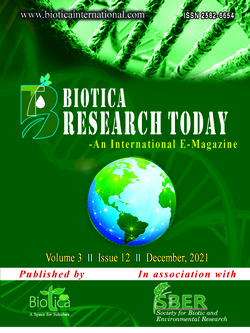
Identification of Clay Minerals by using Different Methods
B. Jeevitha*
Dept. of Soils and Environment, Agricultural College and Research Institute, Tamil Nadu Agricultural University, Madurai, Tamil Nadu (625 104), India
S.R. Shri Rangasami
Rice Research Station, Tamil Nadu Agricultural University, Ambasamudram, Tamil Nadu (627 401), India
P.C. Prabu
Regional Research Station, Tamil Nadu Agricultural University, Paiyur, Krishnagiri, Tamil Nadu (635 112), India
R. Murugaragavan
Dept. of Soils and Environment, Agricultural College and Research Institute, Tamil Nadu Agricultural University, Madurai, Tamil Nadu (625 104), India
S.S. Rakesh
Dept. of Environmental Sciences, Agricultural College and Research Institute, Tamil Nadu Agricultural University, Coimbatore, Tamil Nadu (641 003), India
DOI: NIL
Keywords: Clay minerals, Scanning Electron Microscope (SEM), Transmission Electron Microscope (TEM), X-ray Powder Diffraction (XRD)
Abstract
Soil structure depends on clay and its minerals. The soils with lesser quantity of clay content have a simple structure, whereas soils with more quantity of clay content have complex structures and more pore size pattern. Their response to changes in water content is structurally quite different from that of sandy soils. Clays have a wider specific surface, often predominantly negatively charged, that retains nutrients against leaching and reacts with hydrogen and aluminium ions, while buffering the soil against extreme level of pH changes. The clay itself may be a source of plant nutrients when it degrades. Clay minerals, through their physical and chemical properties, affect soil fertility by controlling nutrient supplies and availability, through the sequestration and stabilization of soil organic matter, by controlling soil physical properties through micro-aggregate formation, by influencing soil acidity and controlling.
Downloads
not found
Reference
Lazarev, A.N., 1974. The dynamics of crystal lattices. In: The Infrared Spectra of Minerals, (Eds.) Farmer, V.C. Mineralogical Society, London, pp. 69-86.
Van Olphen, H., Fripiat, J.J., 1979. Data handbook for clay minerals and other non-metallic materials, Pergamon Press, New York, p. 346.
